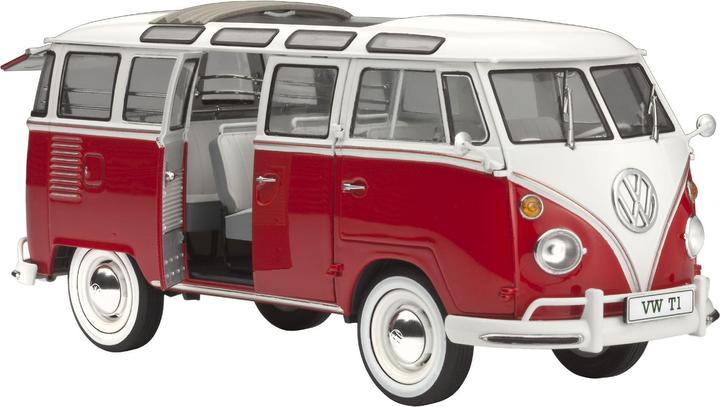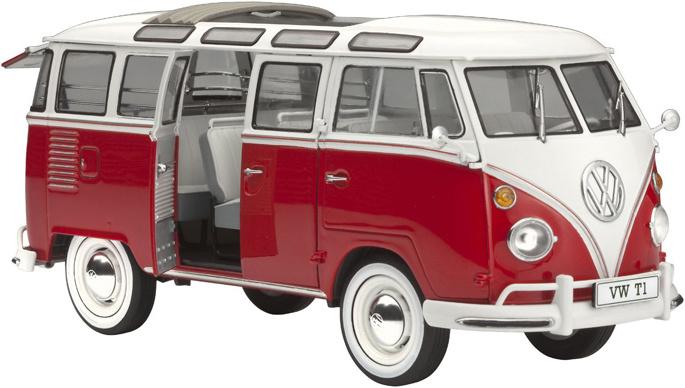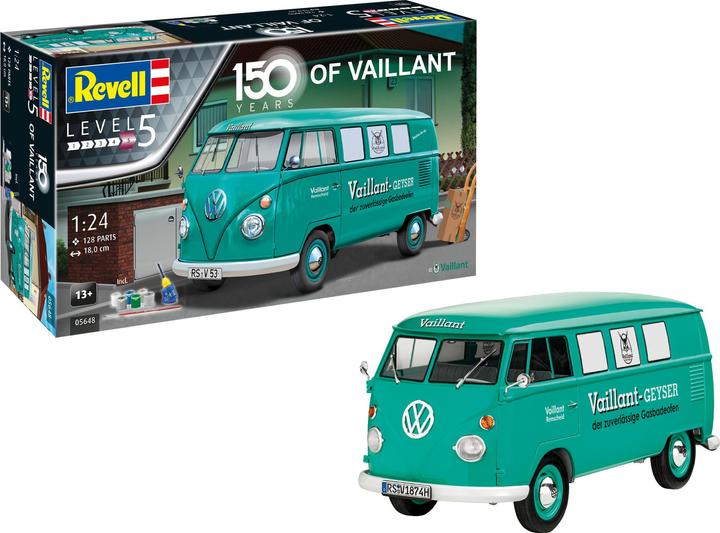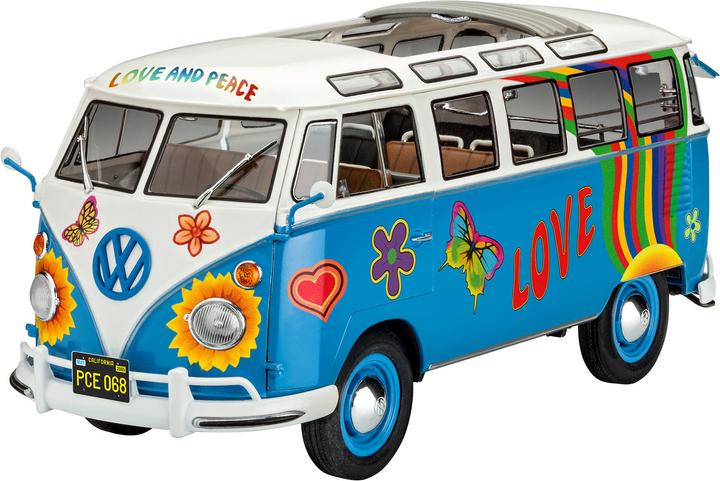Colour5
Product details
The origin of all today's Vans and Transporters can be traced back to the flatbed vehicle used for internal transport at the Volkswagen factory in Wolfsburg in the late 1940s, which inspired the Dutch importer Ben Pon to come up with the idea of a transport vehicle. VW developed several prototypes for a spacious vehicle suitable for transport purposes at the end of the 1940s. Since none of the initially desired names could be used without restrictions, the new vehicle class was named "Transporter." From March 8, 1950, the first generation Transporter was produced in series. The vehicle, with its characteristic V-shaped front and split windshield, was available in various versions, including as a minibus. The technology was based on that of the Volkswagen Type 1, known as the Beetle, so the T1 was equipped with an air-cooled four-cylinder boxer engine. The power of the reliable rear engine with a displacement of 1.2 liters increased to 34 hp from 1961 onwards. The luxury version of the minibus, the nine-seater special model, is still referred to today as the "Samba Bus" and exudes a distinctive automotive charm with oval roof windows, very comfortable seats, a folding roof, and many chrome parts.
The model features a multi-part body, a detailed interior with a dashboard and benches, movable doors and tailgate, as well as a movable front wheel steering. The roof can be built either closed or with a retracted folding roof. It includes a replica engine, rotating wheels, European and American bumper versions, chrome wheel covers, door handles, windshield wipers, and a chrome front emblem. Authentic decals with decorative stripes and various license plates (D, NL, F, GB, and USA) complete the overall picture.
Small parts
Caution: Choking hazard – Contains small parts. Not suitable for children under 3 years.Reproduction scale | 1:24 |
Number of pieces | 173 x |
Warning label toy | Warning: Not suitable for children under 3 years. Choking hazard due to small parts that can be swallowed. |
model type | Vehicle kit |
model type | plastic model |
Item number | 5603186 |
Manufacturer | Revell |
Category | Scale modelling |
Manufacturer no. | REV 07399 |
Release date | 30.9.2009 |
External links |
Colour | Red |
Exact colour description | multicolour |
Material group | Plastic |
Material | Plastic, Plastic |
Minimum age | 12 years |
Warning label toy | Warning: Not suitable for children under 3 years. Choking hazard due to small parts that can be swallowed. |
Level | Advanced |
model type | Vehicle kit |
model type | plastic model |
Reproduction scale | 1:24 |
Number of pieces | 173 x |
CO₂-Emission | |
Climate contribution |
Scope of delivery | Construction kit, Manual |
Length | 181 mm |
Width | 181 mm |
Height | 181 mm |
Weight | 5945 g |
Length | 35.20 cm |
Width | 8.10 cm |
Height | 21.30 cm |
Weight | 438 g |
Compare products
Goes with
Reviews & Ratings
Warranty score
How often does a product of this brand in the «Scale modelling» category have a defect within the first 24 months?
Source: Digitec Galaxus- 7.Wood Trick0.1 %
- 12.Pichler0.2 %
- 12.Revell0.2 %
- 12.Rolife0.2 %
- 15.Italeri0.3 %
Warranty case duration
How many working days on average does it take to process a warranty claim from when it arrives at the service centre until it’s back with the customer?
Source: Digitec Galaxus- RevellNot enough data
- 1.Jägerndorfer0 days
- AirfixNot enough data
- Army PainterNot enough data
- BandaiNot enough data
Return rate
How often is a product of this brand in the «Scale modelling» category returned?
Source: Digitec Galaxus- 14.Heller1 %
- 15.Airfix1.3 %
- 16.Revell1.4 %
- 17.Tamiya1.5 %
- 18.Metal Earth1.9 %




